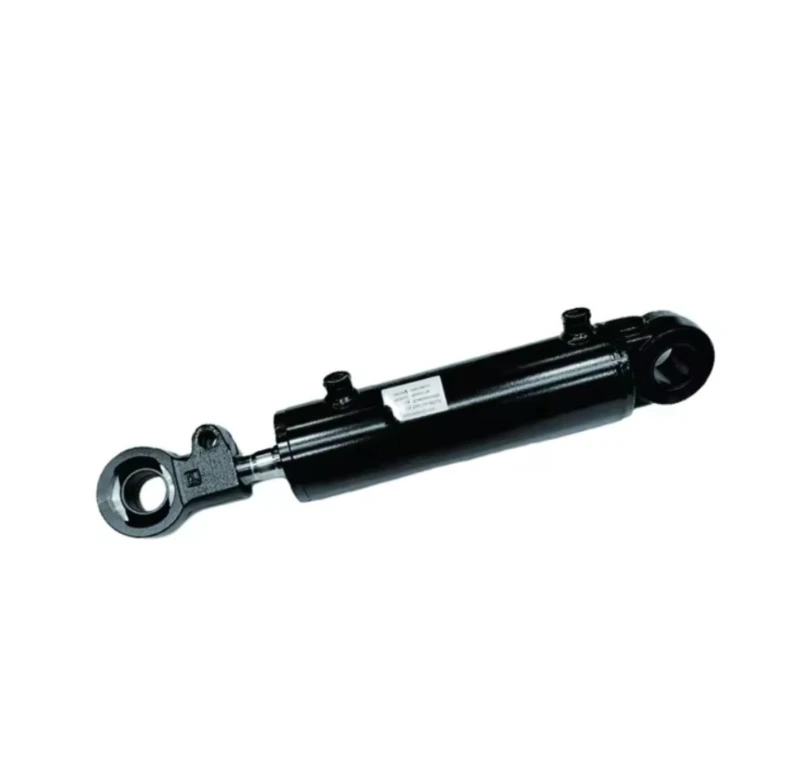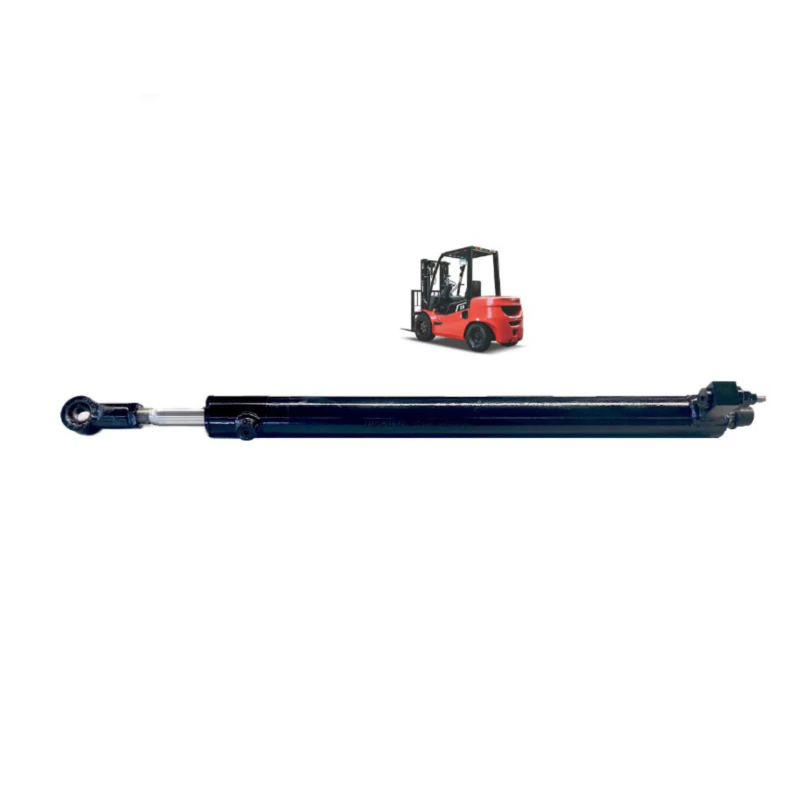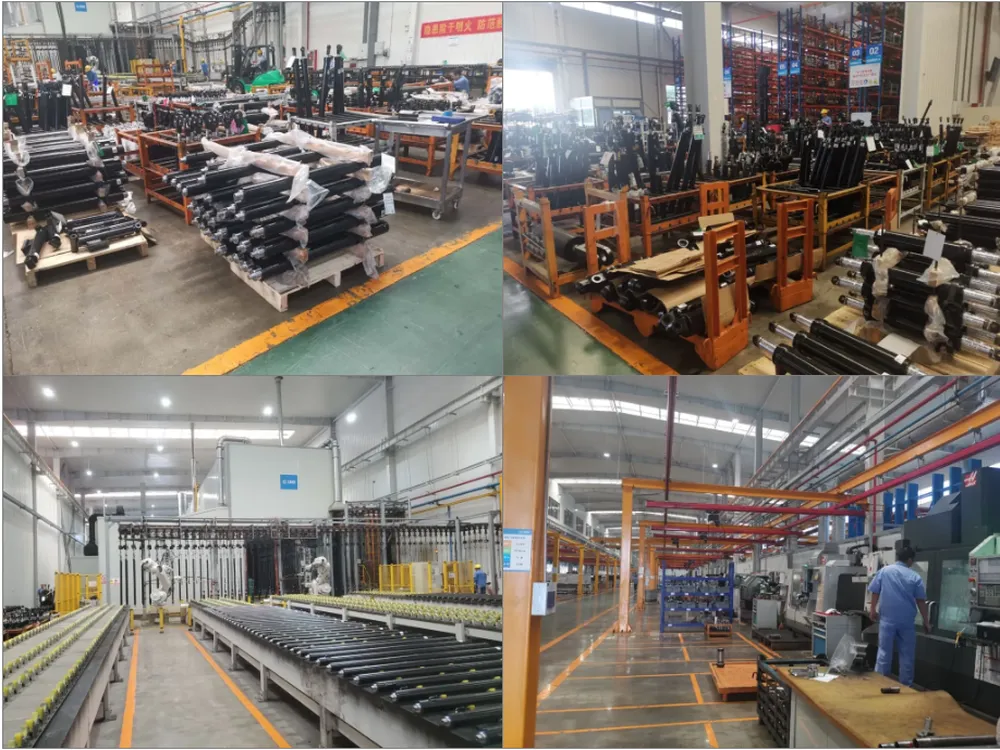Tilt Cylinder Safety Guidelines
Introduction
A tilt cylinder is an essential component used in various heavy-duty machinery. This hydraulic cylinder is responsible for providing the necessary force to tilt the equipment's bucket or blade. However, as much as this component is useful, it can also be hazardous if not used correctly. Therefore, it is essential to adhere to the safety guidelines outlined below to ensure the safety of the machine operator and those within the worksite.
1. Inspect the Tilt Cylinder Regularly
Before operating the machine, inspect the tilt cylinder for any signs of damage or wear and tear. Check for leaks, cracks, or any other deformities that could compromise the cylinder's integrity. If you find any issues, replace or repair the cylinder as soon as possible to prevent accidents.

2. Use Proper Equipment
When replacing or repairing the tilt cylinder, ensure that you use the appropriate tools and equipment. Use a hoist or lifting device to lift the equipment's bucket or blade, and use a suitable stand to prevent the equipment from collapsing. Failure to use the proper equipment can result in accidents that could cause severe injuries or fatalities.
3. Follow the Manufacturer's Guidelines
The tilt cylinder's manufacturer provides specific guidelines on its installation, operation, and maintenance. Ensure that you follow these guidelines to the letter. Failure to adhere to these instructions could compromise the cylinder's integrity and cause accidents.

4. Train the Machine Operator
Train the machine operator on the proper use of the tilt cylinder. Ensure that they understand the machine's operational manual and the risks associated with the cylinder's misuse. Proper training can help prevent accidents and ensure the safety of the machine operator and those within the worksite.
5. Use Personal Protective Equipment (PPE)
Require all personnel within the worksite to wear appropriate PPE, such as safety glasses, gloves, hard hats, and steel-toed boots. This PPE can provide protection against injuries that could occur due to falling objects, spills, and other accidents within the worksite.
6. Maintain a Safe Distance
Ensure that all personnel maintain a safe distance when operating heavy machinery with tilt cylinders. Stand clear of the equipment's bucket or blade to prevent severe injuries or fatalities should the machine fail during operation.
7. Shut Down the Machine When Not in Use
When the machine is not in use, shut it down completely, and remove the key to prevent unauthorized use. This measure can prevent accidents resulting from the machine's accidental start-up or unauthorized use.
Why Tilt Cylinder is Suitable for the Application and its Advantages
A tilt cylinder is suitable for various heavy-duty machinery applications due to its numerous advantages. These advantages include:
- Efficient Power Transfer: The tilt cylinder provides efficient power transfer between the machine's hydraulic system and the equipment's bucket or blade, resulting in optimal performance.
- Precision Control: The tilt cylinder allows for precise control of the equipment's bucket or blade, ensuring accurate material handling.
- Improved Safety: The tilt cylinder's safety features, such as overpressure protection and load-holding valves, ensure the safety of the machine operator and personnel within the worksite.
- Increased Productivity: The tilt cylinder's efficient power transfer and precision control can help increase the machine's productivity, resulting in faster work completion.
- Durable and Long-lasting: Tilt cylinders are designed using high-quality materials that provide durability and long-lasting performance, even in harsh working conditions.
Working Principle of Tilt Cylinder
A tilt cylinder works by converting hydraulic pressure into mechanical force. When the machine operator activates the hydraulic system, the hydraulic fluid flows into the cylinder's chambers, causing the piston rod to move. This movement causes the attached equipment's bucket or blade to tilt, allowing for efficient material handling.
How to Choose the Right Tilt Cylinder for the Application
Choosing the right tilt cylinder for the application is essential to ensure optimal performance and prevent accidents. Consider the following factors when selecting a tilt cylinder:
- Equipment Type: Choose a tilt cylinder that is suitable for the equipment type, considering factors such as weight, size, and hydraulic flow rate.
- Operating Conditions: Consider the operating conditions, such as temperature, pressure, and working environment, when selecting a tilt cylinder.
- Compatibility: Ensure that the tilt cylinder is compatible with the machine's hydraulic system to prevent performance issues.
- Manufacturer's Recommendations: Consider the tilt cylinder manufacturer's recommendations on the cylinder's installation, operation, and maintenance when choosing the cylinder.
- Cost: Choose a tilt cylinder that is within your budget but doesn't compromise on quality or safety.

How to Install Tilt Cylinder
Installing a tilt cylinder requires expertise and proper equipment to prevent accidents and ensure optimal performance. Consider the following steps when installing a tilt cylinder:
- Ensure that the equipment is on a level surface and that the parking brake is engaged.
- Disconnect the hydraulic lines from the old tilt cylinder and remove it from the equipment.
- Install the new tilt cylinder onto the equipment, ensuring that it is securely fastened and aligned correctly.
- Reconnect the hydraulic lines to the new tilt cylinder.
- Test the tilt cylinder for leaks, proper alignment, and performance before operating the machine.
About Our Company
We are a comprehensive transmission equipment manufacturer that specializes in hydraulic cylinder research and development, manufacturing, and sales. With over 15 years of experience in designing, producing, and manufacturing tilt cylinders, we serve clients in Europe, America, Africa, Asia, and other regions worldwide. We have a team of industry professionals who are dedicated to innovation and manufacturing, using advanced production and testing equipment. We employ standardized production management methods to ensure that every aspect of tilt cylinder production is under strict control, producing high-quality, efficient, and stable production for our clients. Our main products include tilt cylinders, boom cylinders, forklift tilt cylinders, steering cylinders, small hydraulic cylinders, and hydraulic pistons that are widely used in various industries such as construction, agriculture, mining, aviation, automotive, marine, and material handling.

Edited by Czh